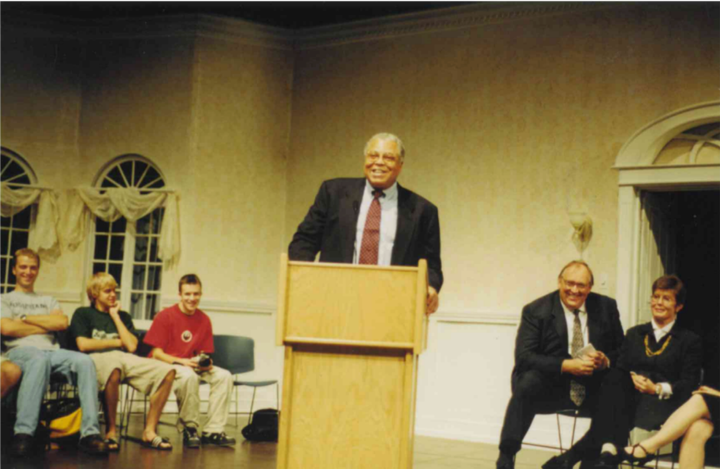AU to break ground on track this spring
JACOB KNUTSON
jaknutson15@ole.augie.edu
Next fall, if there are not any hurdles, you could be running on Augustana’s new track.
In January, the university announced plans to build the Larson Track and Field Complex, and President Herseth Sandlin said students can expect to see excavators near the soccer field sometime this spring or early summer.
Construction of the complex will be broken into two phases. The first phase will sport a six-lane, 400-meter track, a six-lane, 300-meter track and 100 yards of turf in the center of the tracks. Additionally, the field will feature long-jump and triple-jump pits, discus and shot fields and pole vault surfaces.
The second phase will encompass a seasonal dome covering the 300-meter track, turf and event spaces. Facilities can put up and take down the dome when necessary, allowing for a track space year round.
Herseth Sandlin said the university will be ready to break ground on the first phase after it receives a few more donations and the weather warms. So far, Augustana has raised $1.8 million of the $3 million price tag. She predicts phase one could be completed by fall of this year.
“We are really pleased we have raised as much as we have to date.” Herseth Sandlin said. “But we are going to take March and April to raise more. Right now, we are working with the contractor to determine our construction time, but we really want to get going on this.”
Dean of Students Jim Bies said phase one may be a relatively quick build because contractors do not have to move a lot of earth or lay a foundation as they would for a building.
“We are not building any structures,” Bies said. “What we’re doing is engineering the soil and laying down the track material and turf. I think the project is just waiting for the green light.”
Phase two will take a bit longer, Herseth Sandlin said.
The university will have to raise an additional $3 million, but after the money is raised, it is just a matter of buying the dome. The infrastructure needed for the dome will be built in phase one.
Linda Larson, a 1987 graduate, donated the bulk of the $1.8 million around a decade ago in honor of her father and sister.
Her father, Billy Larson, long supported track and field. Her sister, Kathie, a 1978 graduate and cheerleader, ran track and co-led Augustana’s first competitive gymnastics team.
“We have Linda Larson, who gave us a gift nearly 10 years ago,” Herseth Sandlin said. “She gave us the gift to build a new track and field because she knew we were going to build a football stadium in the place of the existing track and field.”
“There was some early work, but not much. But at some point, your generous donor starts asking questions about when you’re going to use the donation they gave for the purpose it was intended. I felt that it was important for us to drive some decisions around what had been planned and to reset that process. Because she has been very patient.”
Junior Josh Barrows runs middle distance for Augustana Track and Field. He said the new track would be a godsend for the program.
“The facilities that we’re working with right now are easily the worst in the conference,” Barrows said. “We have a two-laned, 160-meter track for a track team of about 80 to 90 kids.”
The current smaller track, he said, increases the risk of injury because athletes take tighter turns and have less time to react while at a full sprint.
The team is also vying for gym space with other teams on campus, creating a dangerous practicing space.
Barrow said one day the football team was practicing on the inside of the track while the lanes were full of runners.
“[The football team] just about hit some of our girls with a football while we were running,” he said. “You step on a football while running and your season is pretty much over.”
A larger track would free up space and dampen the risk of injury. Barrows said it may even produce a better track and field program overall.
Bies stressed that the space would benefit all aspects of campus and even the surrounding neighborhood.
In addition to providing more space for other sports programs like soccer and football, Bies said students will be able to use the space for intramural sports. Members of the neighborhood may be able to use parts of the track, as well.
“When phase two becomes a reality, it is really going to be a nice enhancement,” Bies said.
“In the winter, it would have the ability to be an indoor activity area for student use well after dark.”
Depending on demand, Bies said the field could be a late-night activity space open until midnight or after.



